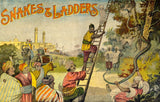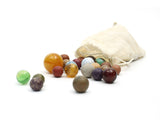History of Toys & Games
The origin of toys is prehistoric; dolls representing infants, animals, and soldiers, as well as representations of tools used by adults are readily found at archaeological sites. The origin of the word "toy" is unknown, but it is believed that it was first used in the 14th century. Toys are mainly made for children.
Toys, and play in general, are important when it comes to growing up and learning about the world around us. The young use toys and play to discover their identity help their bodies grow strong, learn cause and effect, explore relationships, and practice skills they will need as adults. Adults use toys and play to form and strengthen social bonds, teach, remember and reinforce lessons from their youth, discover their identity, exercise their minds and bodies, explore relationships, practice skills, and decorate their living spaces.
Most children have been said to play with whatever they can find, such as pinecones and rocks. Toys and games have been unearthed from the sites of ancient civilizations. They have been written about in some of the oldest literature. Toys excavated from the Indus valley civilization (3000-1500 BCE) include small carts, whistles shaped like birds, and toy monkeys, which could slide down a string.
The earliest toys are made from materials found in nature, such as rocks, sticks, and clay. Thousands of years ago, Egyptian children played with dolls that had wigs and movable limbs, which were made from stone, pottery, and wood. In Ancient Greece and Ancient Rome, children played with dolls made of wax or terracotta, sticks, bows and arrows, and yo-yos. When Greek children, especially girls, came of age it was customary for them to sacrifice the toys of their childhood to the gods. On the eve of their wedding, young girls around fourteen would offer their dolls in a temple as a rite of passage into adulthood.
The oldest known mechanical puzzle also comes from Greece and appeared in the 3rd century BC. The game consisted of a square divided into 14 parts, and the aim was to create different shapes from these pieces.
Click on the images below to learn about the history and origins of these games
|
Snakes and Ladders |
Snobs |
Marbles |




